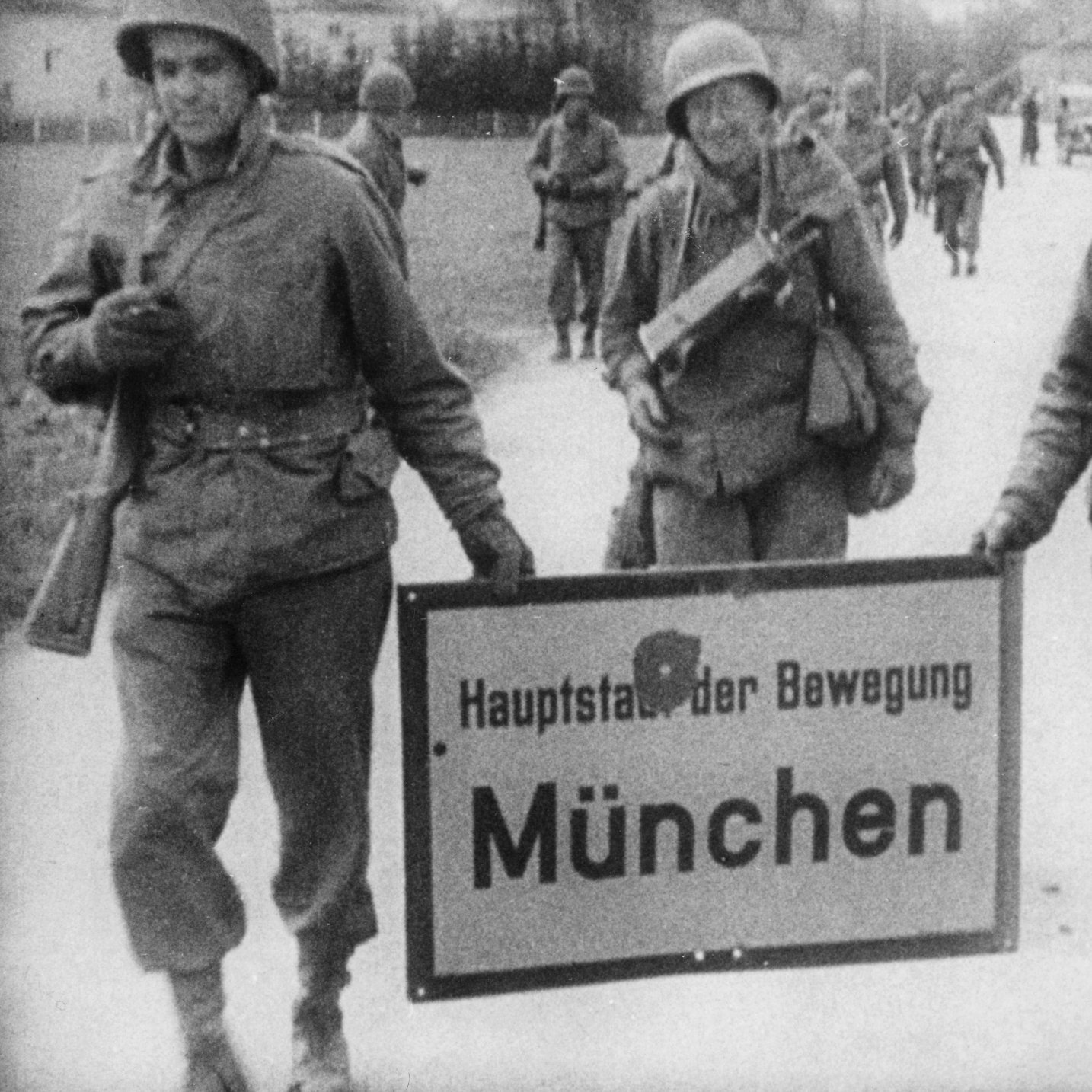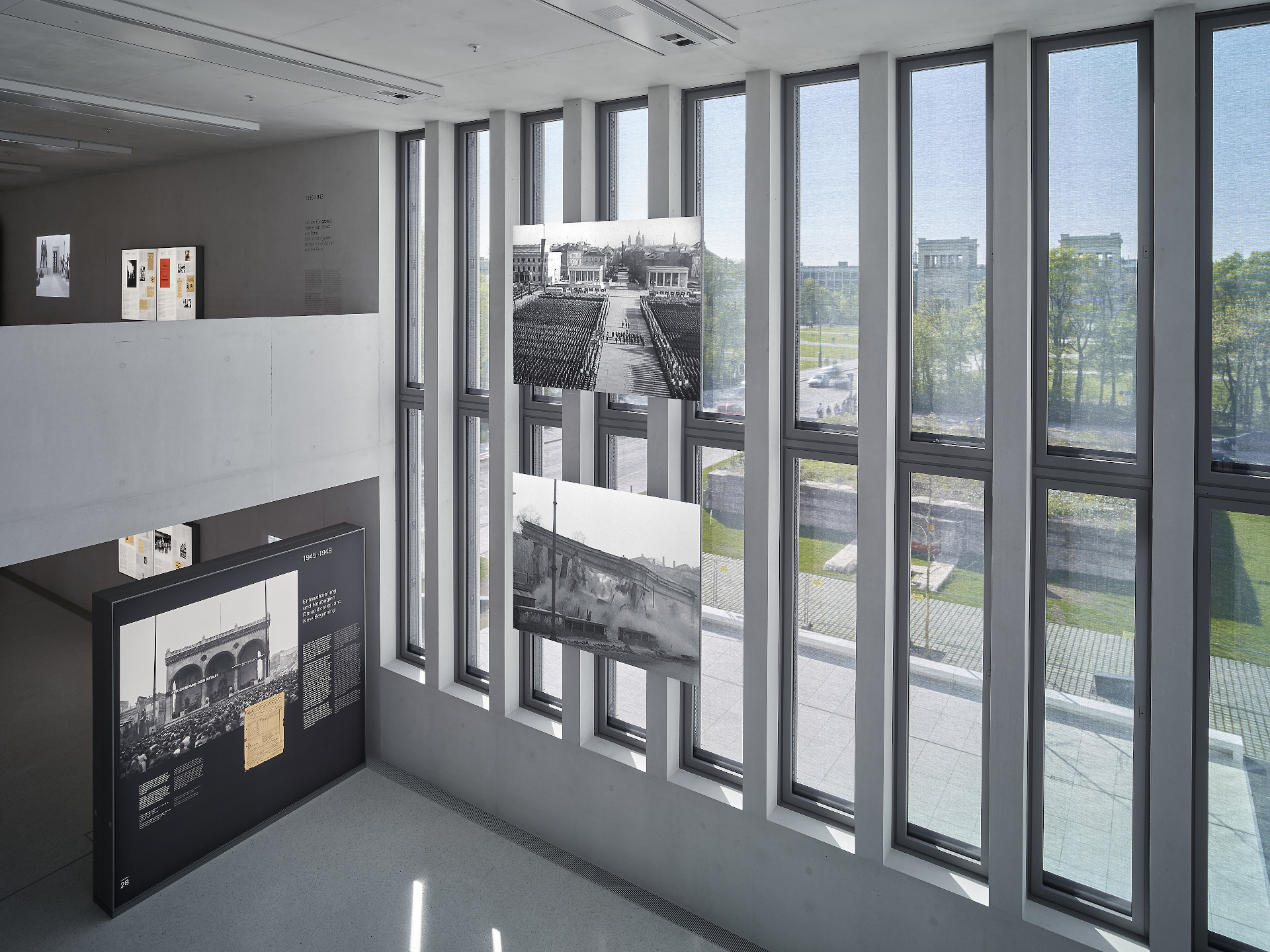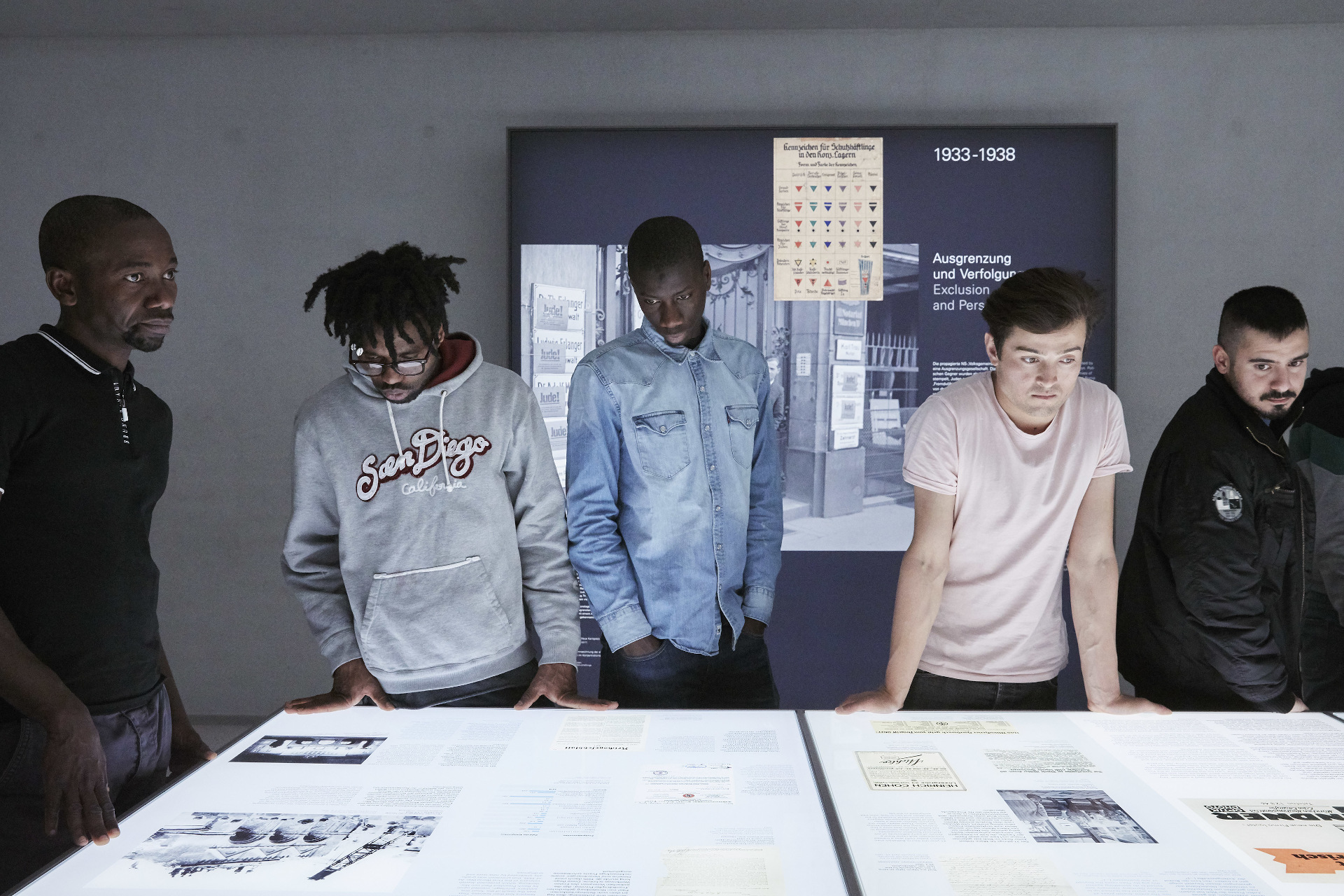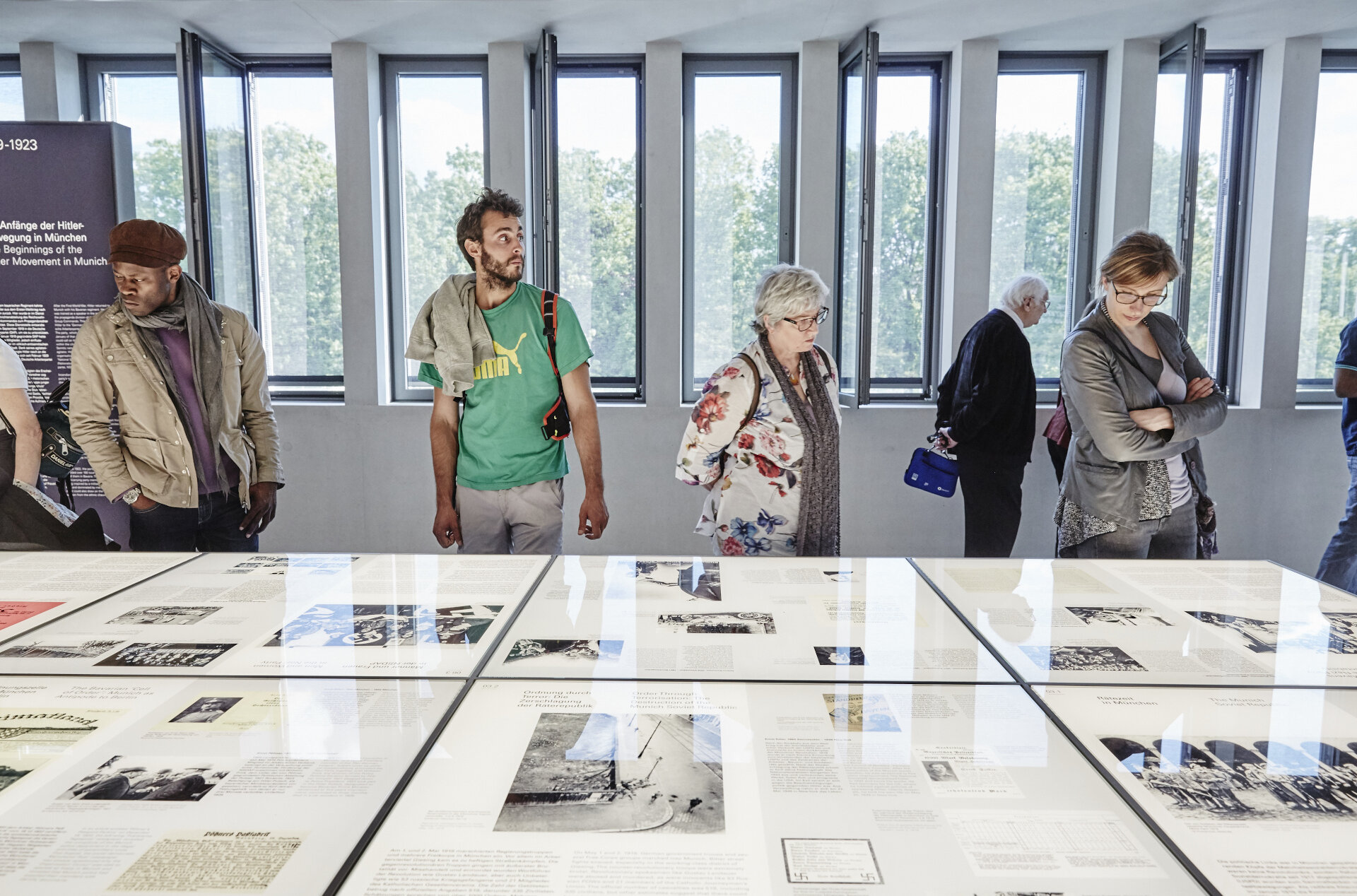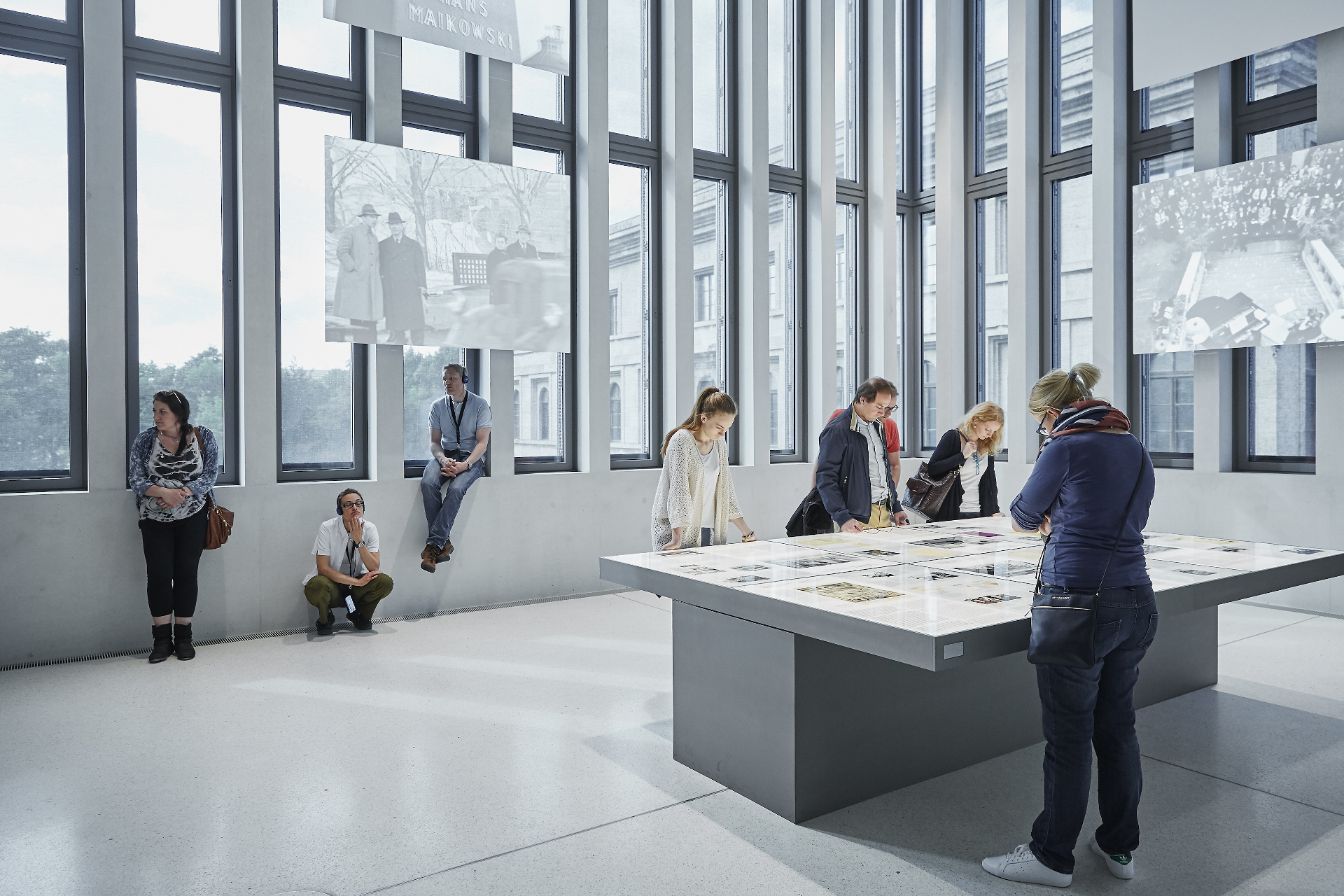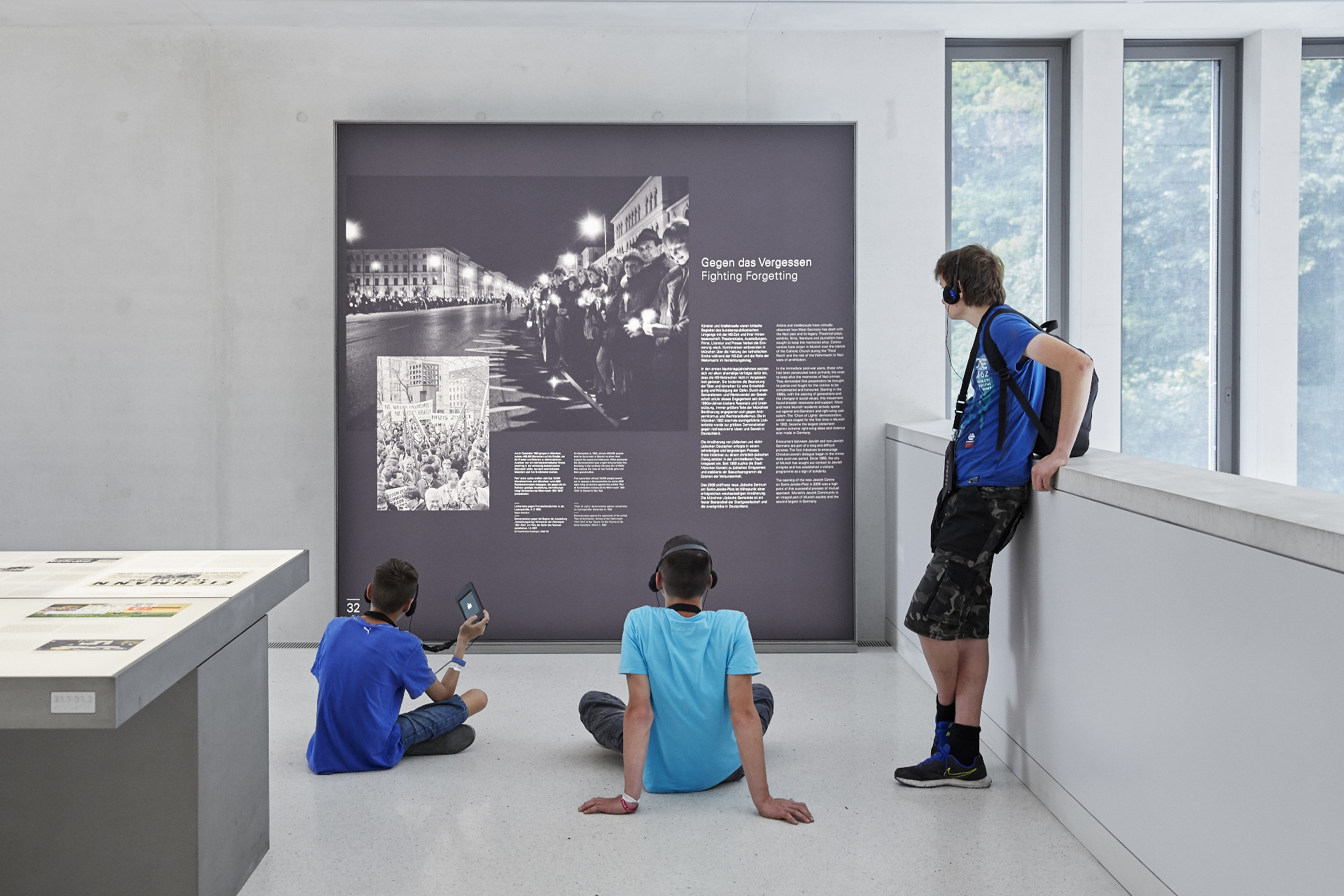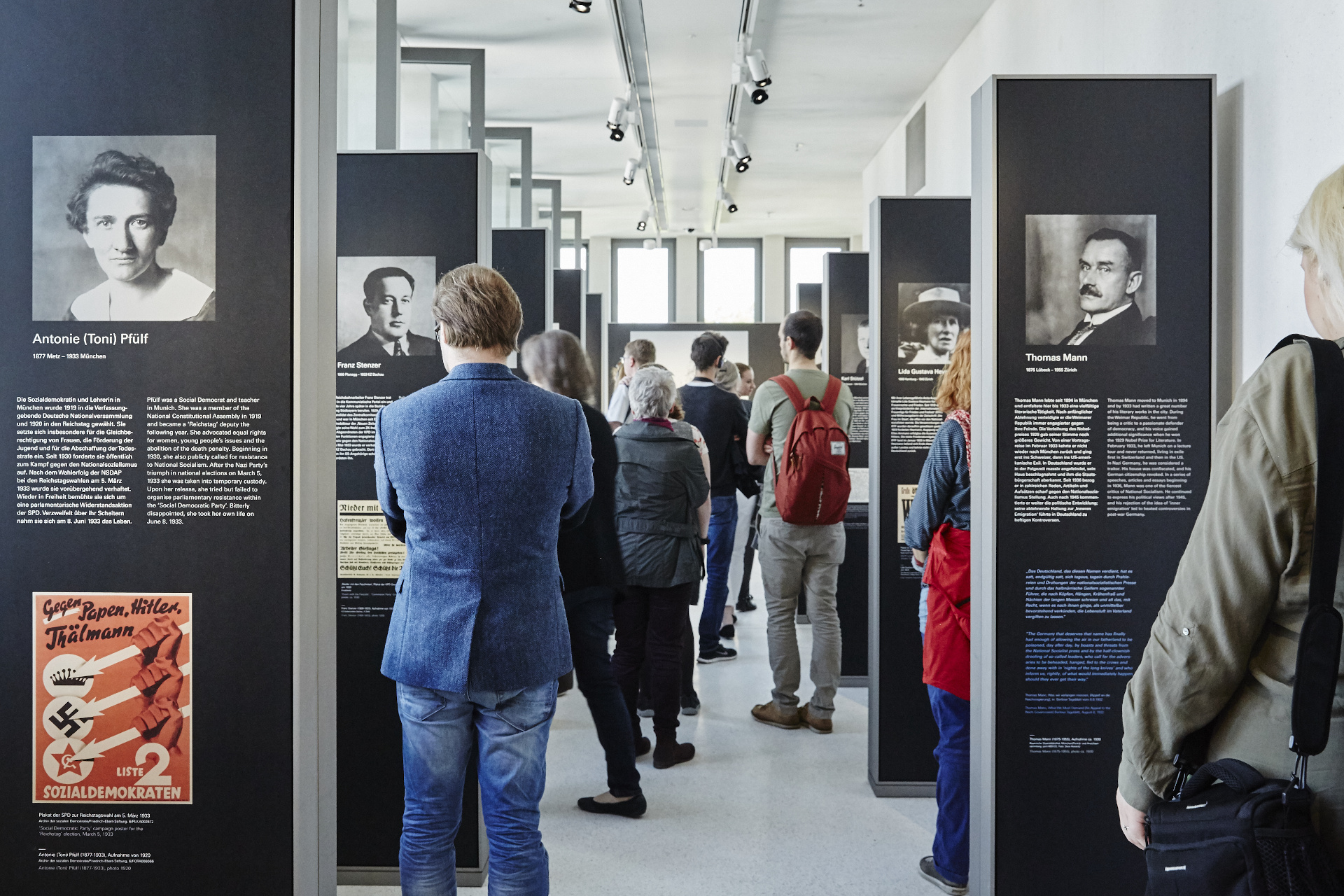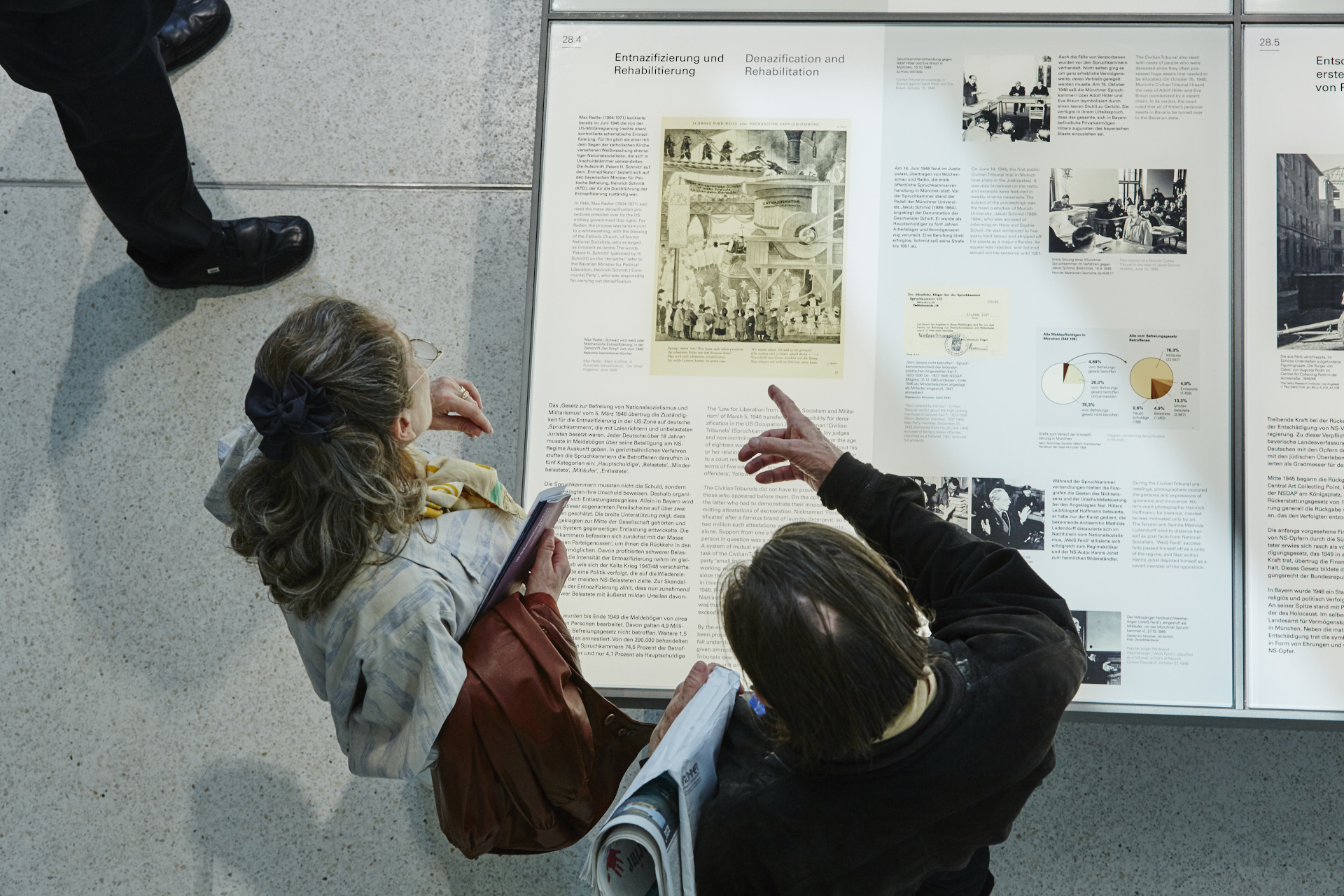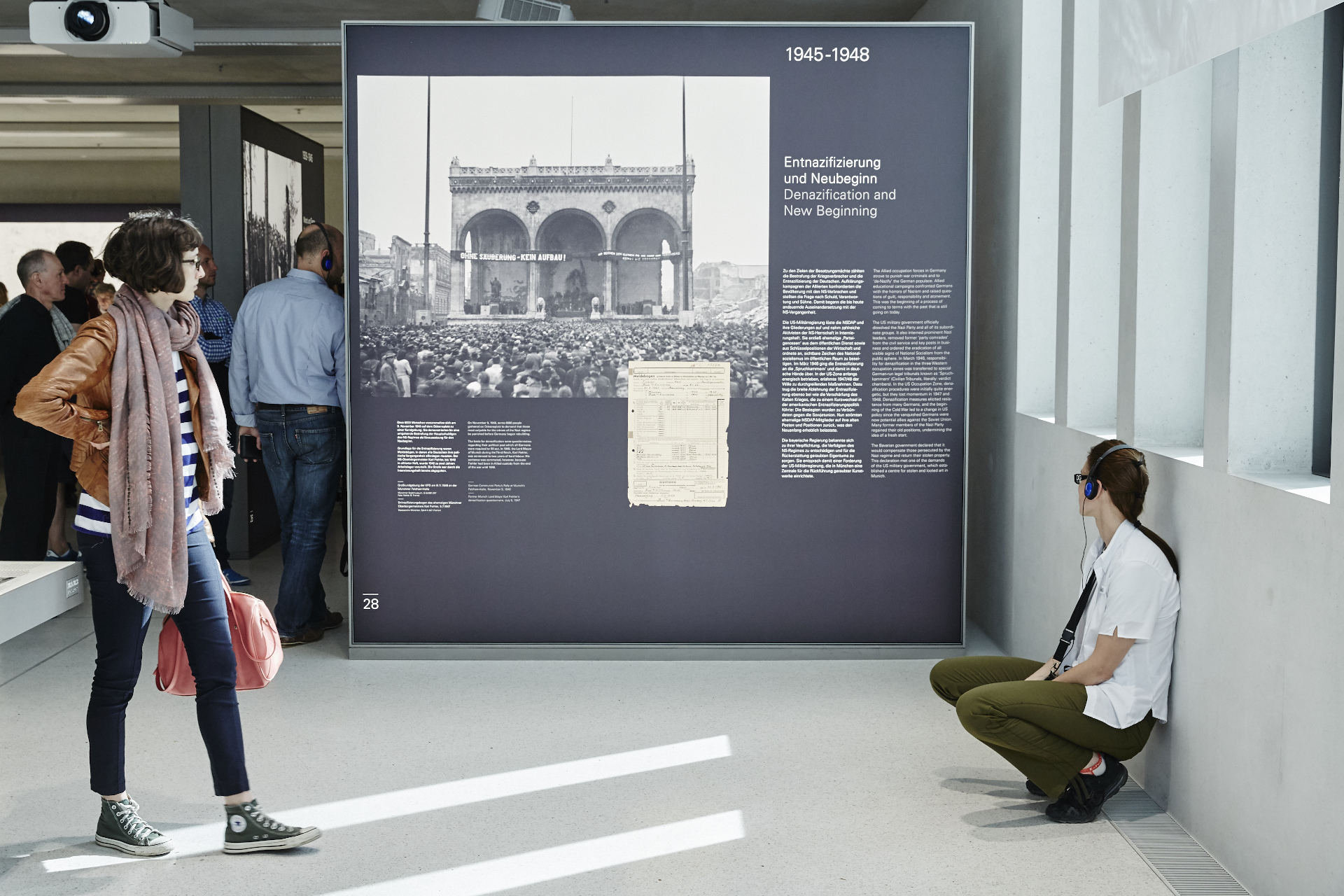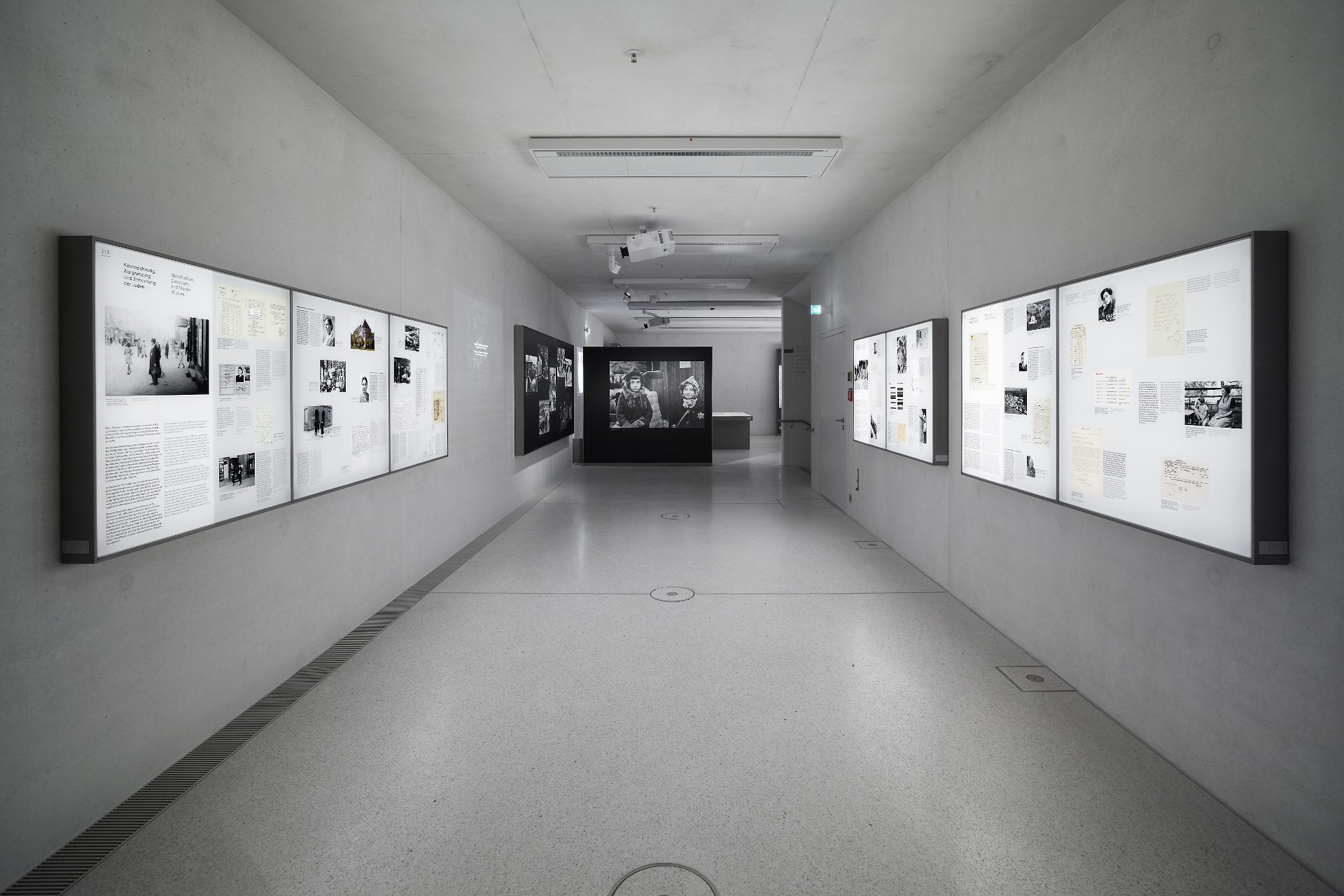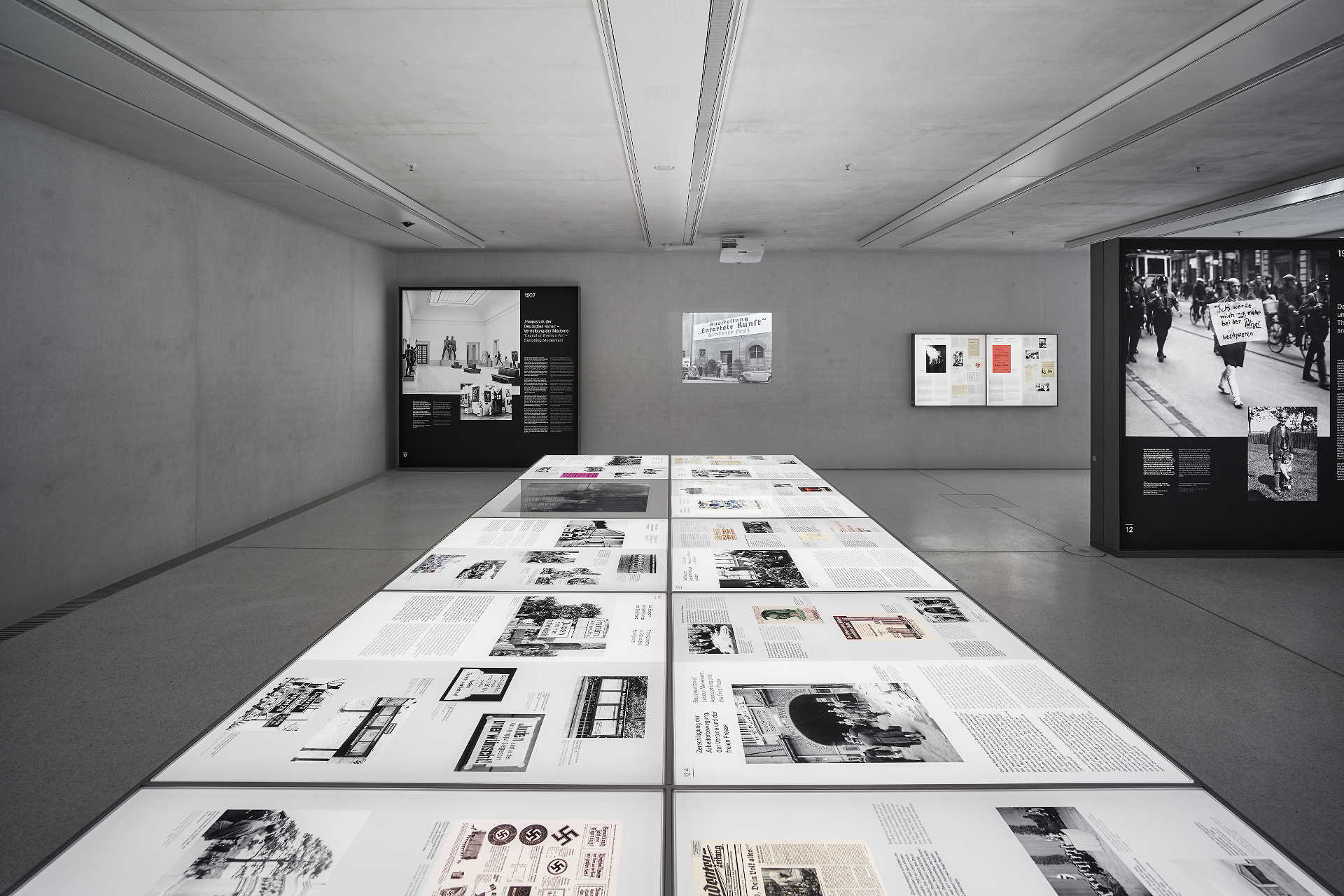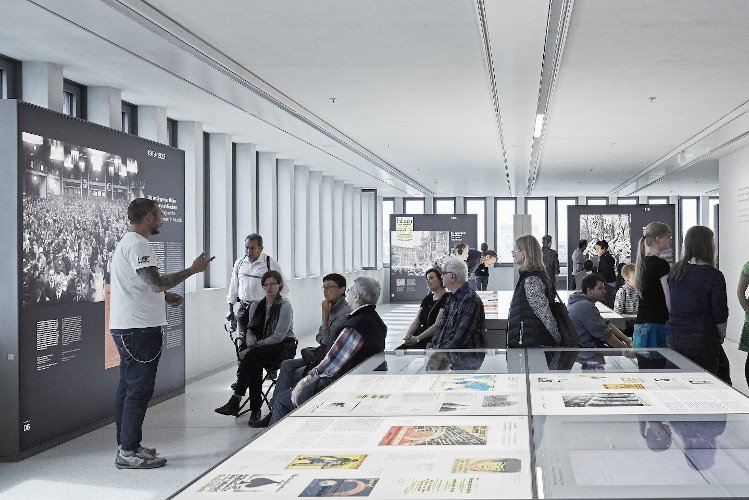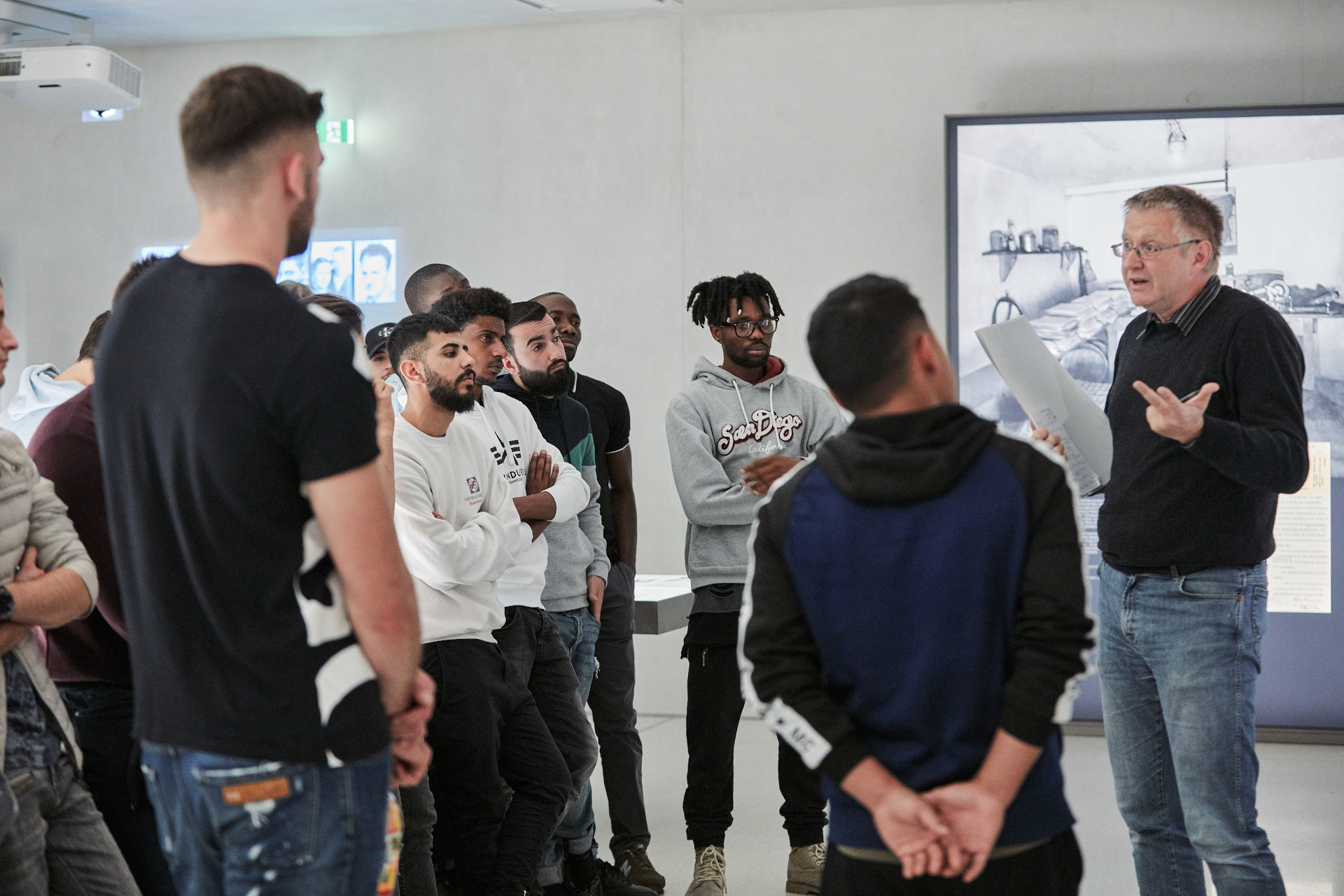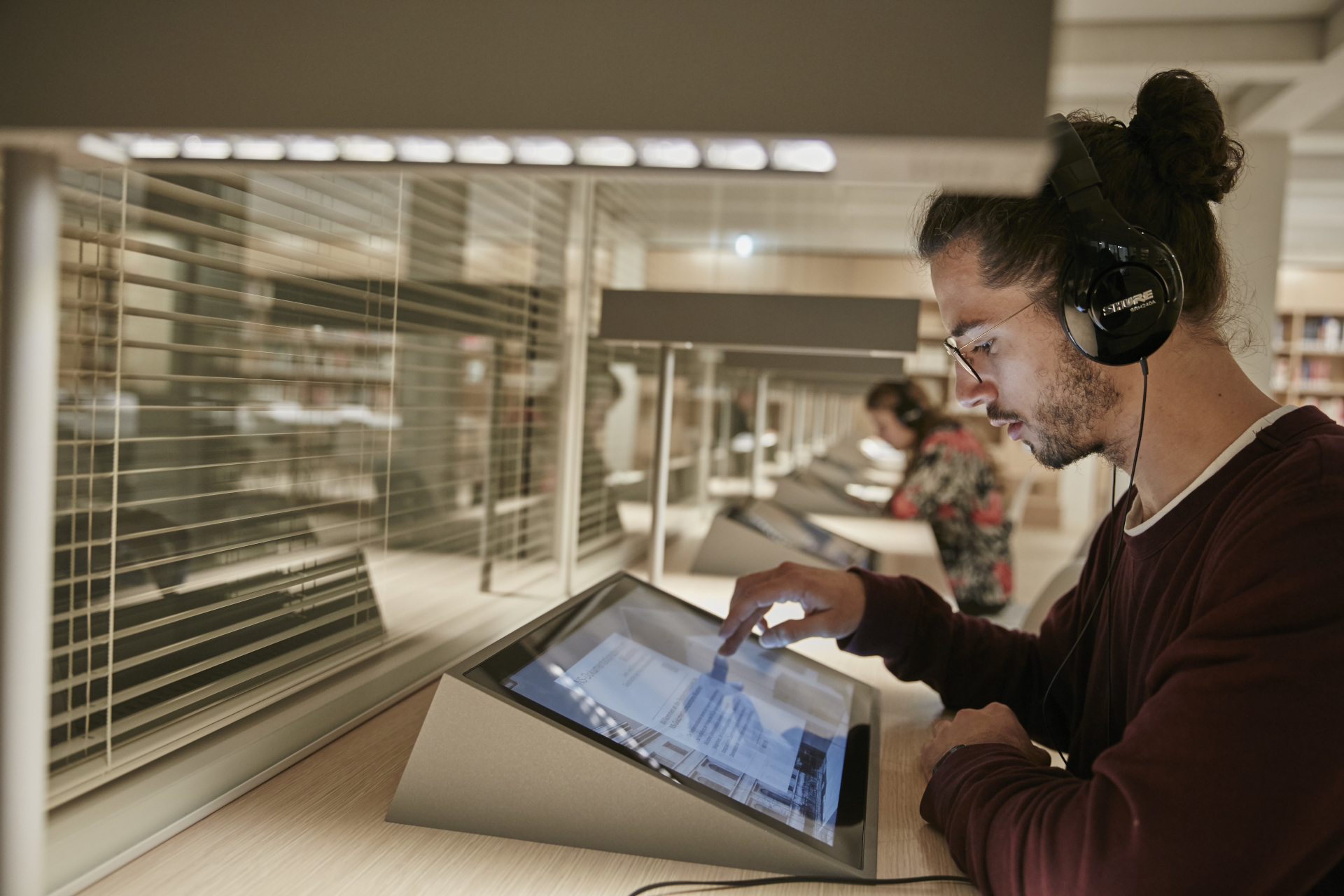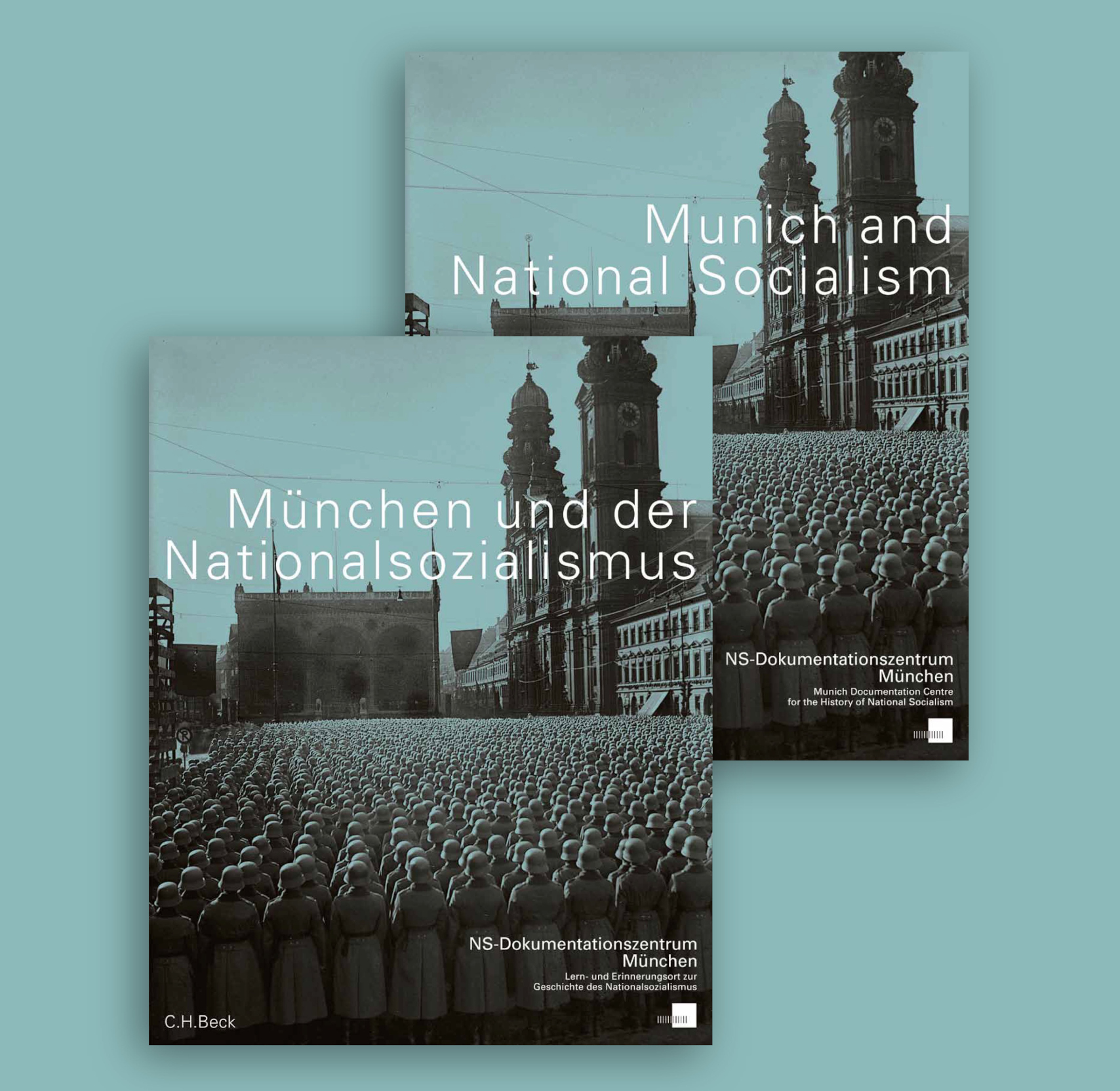Using photographs, documents, and texts, as well as film projections and media stations, the exhibition shows how the Nazi state’s policies of exclusion and persecution functioned, as well as the opportunity structure and incentives it introduced to ensure the broad support of the population. Selected biographies of perpetrators, victims, and fellow travelers as well as those of people who resisted the regime reveal their respective motives and scope for action. In view of the Europe-wide impact of World War II, the exhibition also focuses on wartime Munich and the participation of Munich citizens in Nazi crimes in the occupied territories. Finally, it looks beyond the collapse of the Nazi regime in 1945 and considers the repercussions of the Nazi era for the present day.
The origins and rise of the Nazi movement in Munich | 1918–1933
What were the causes and special social and political circumstances that not only made the rise of the NSDAP in Munich possible but actually fostered it? How did the apparently marginal Nazi movement become a leading party of the masses?
The first part of the exhibition sets out to answer these questions. It begins with World War I, the short-lived Bavarian soviet republic, and the counter-revolution in Munich and Bavaria that followed it. As well as tracing the early political career of Adolf Hitler and the founding of the NSDAP, the exhibition also portrays the nationalistic and antisemitic circles in Munich that provided a breeding ground for right-wing extremist ideology and the movement it fostered. During the 1920s, this reactionary milieu contrasted with a “different” Munich of liberal and democratically-minded citizens. Other key developments covered by this section of the exhibition are Adolf Hitler’s failed putsch of November 9, 1923, the regrouping of the NSDAP after 1925, its rise to become the strongest party during the world economic crisis, its seizure of power in 1933, and Munich’s subsequent enhanced status as “capital of the movement.”
Nazi rule and society | 1933–1939
How were the Nazis able to secure their power? The second section of the exhibition traces the systematic destruction of the rule of law and of democratic structures. This went in hand in hand with the establishment of a dictatorship of violence, tyranny, and terror.
The Nazi idea of a “people’s community” had two sides to it that conditioned one another: on the one hand, the exclusion and persecution of political opponents and people who did not fit in with the Nazis’ racial ideology; on the other, the citizens of Munich who chose to look away, to look on, or to join in. While it is certainly true that there was some opposition in various social groups—in the labor movement or in the Church, for example—very few of those who rejected Nazism translated their thoughts into action. Anyone who showed resistance was severely punished.
Over time, Nazi ideology spread to all realms of life, including art, culture, and science. Munich became “the capital of German art,” and the cultural diversity of modernism was outlawed as “degenerate.” Public life was increasingly shaped by a Nazi cult that was staged above all in the Party quarter around Königsplatz.
As the regime’s foreign policy ambitions grew, the Munich Agreement regulated the annexation of the Sudetenland. In Germany the level of violence continually escalated and culminated in the deportation and murder of Jews and Sinti and Roma as well as of disabled and mentally ill patients in the Nazi “euthanasia” program.
Wartime Munich | 1939–1945
The next section of the exhibition concentrates on the events of World War II—from the outbreak of war to the collapse of the regime. The exhibition outlines the crimes in which soldiers and police from Munich were involved during the war and describes everyday life in the city during wartime, both for the “German” population and for those who were persecuted and discriminated. The population cannot fail to have noticed the 100,000 people deported from the occupied territories to perform forced labor, who were highly visible in Munich. They were ruthlessly exploited in almost all sectors of the economy, especially in the arms industry.
As the war progressed, the Nazi state stepped up its persecution of anyone who opposed it. A few isolated acts of resistance and of “civil disobedience” show that it was possible to take a humanitarian stand in the face of injustice. Nevertheless, anyone who resisted took a great personal risk. Especially during the final phase of the regime, which was marked by extreme brutality, not a few members of the resistance paid for their courage with their lives. A prime example is the members of the resistance group White Rose, who were condemned to death for their actions and executed. Only when the US Army entered Munich on April 30, 1945, did the regime finally collapse.
Confronting the Nazi past | 1945 until today
The final section of the exhibition is devoted to the period after 1945. De-Nazification and democratization marked Germany’s new beginning and reconstruction following its defeat. Confronting Nazi crimes was a hesitant and slow process, and in many respects inadequate, as the exhibition illustrates with a number of examples. Most Germans were unwilling to acknowledge any feeling of guilt for what had happened and they tended to repudiate and deny personal responsibility.
Even when the perpetrators were brought to trial, in most cases they could expect a mild sentence. Nevertheless, Munich succeeded in making a new start based on democracy. This was reflected in the city council, in the state constitution, and in the media, albeit overshadowed in many areas by continuities in personnel. The exhibition looks at both the successes and the gaps in the process of reconciliation and the continuing discrimination against many victims of Nazi terror. For a long time after 1945, attitudes to the Nazi past vacillated between reappraisal, continuity, and denial.
The exhibition illustrates these attitudes in terms of what happened to the city’s architecture, where traces of the Nazi era were largely removed or, in the case of the “Temples of Honor,” grass was allowed to grow over them. Only in the 1980s did the widespread tendency to try to forget or deny the past prompt an increasing number of Munich’s citizens to campaign for a lively culture of remembrance. Yet although right-wing extremism and antisemitism have been shunned by society since 1945, the mindsets that foster these tendencies have lived on and in some cases resulted in politically motivated acts of terrorism and violence, such as the attack at Munich’s Oktoberfest beer festival in 1980 or the murders committed by the right-wing extremist organization National-Socialist Underground (NSU) in the early 2000s.


